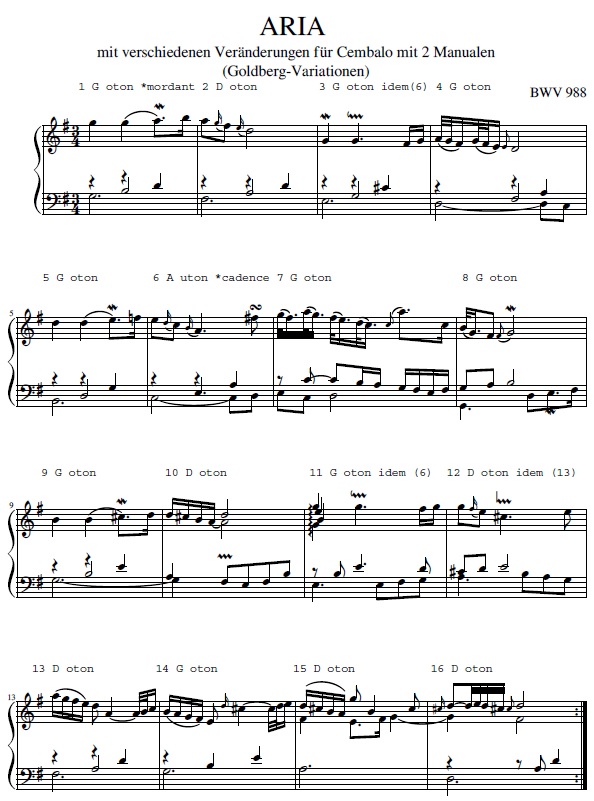This is the complete Aria upon which the Goldberg Variations are based.
The tuning in this version is still rough, but getting closer to reasonableness. The scales are derived from the tonality diamond to the 31-limit, plus a few others that are a 9:8 above those in the diamond. Think of a diamond, with another one floating 204 cents above it. In fact, why not think of 16 diamonds above, and 16 below, for a tonality cube? I only added these because the key of G major is a challenge in my tonality diamond centered on C 1:1.
In this example, the 9:8 otonality and the 3:2 otonality don’t exist in the true 31-limit diamond. They are a 9:8 above the 1:1 and 4:3 otonalities, which are present. Here are the scales I used. I plan to keep playing around with the alternatives to these to see if I can vex the wolves more. But not too much.
- 1:1 otonality
- 4:3 otonality
- 3:2 otonality
- 5:4 utonality
- 9:8 otonality
- 32:19 otonality
One of the advantages of the use of Prent’s Microtonal Slide Bosendorfer, is the virtual whammy bar. Instead of playing two notes for trills, mordants, and grace notes, I can play each with a single note and apply a unique function table to the pitch using Csound. I now can apply up to three different function tables to each note, so I can simultaneously raise a scale by 204 cents, and also apply an ornament to the same note, and I have one left over for something else. Maybe I can make a de-wolfing function to clean up the last vestiges of the wolfiness.

or download here:
Machine4 – v2

